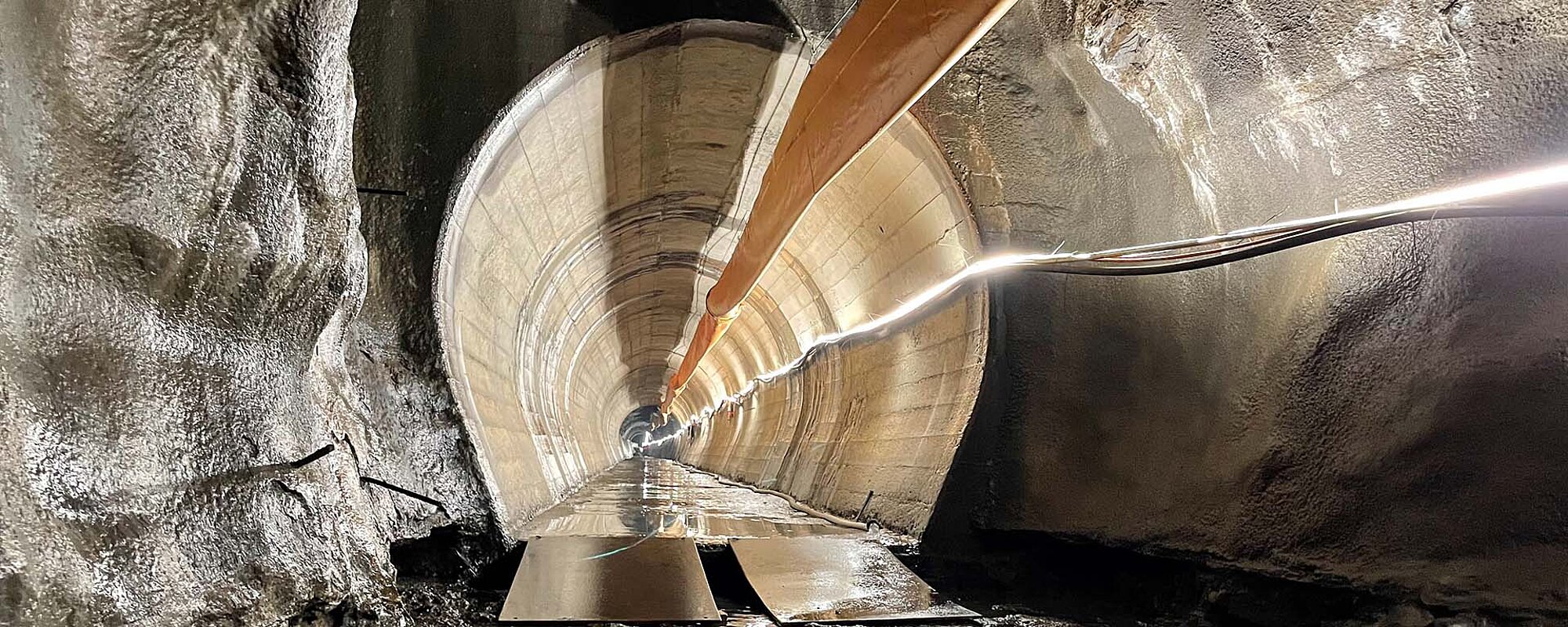Civil engineering
Acceleration of the construction process - use of rapid-hardening concrete in civil engineering
Accelerated construction has become very popular in infrastructure construction. Today, a full closure of a highway or even a section of railroad is avoided wherever possible or kept to an absolute minimum. For underground crossings, the question arises as to how they can be constructed without affecting the infrastructure used above for a long time.
The cover construction method is an accelerated construction measure that is used, for example, for the construction of a new railroad underpass. A line closure is only necessary during the construction of the cover (removal of track and ballast bed, excavation, shuttering, reinforcement, concreting, curing, construction of track and ballast bed). The remaining work steps can take place under the protection of the cover and without interfering with train traffic.
The cover construction method, including pile structures, can be significantly accelerated with rapid-hardening concrete. The hardening time is reduced to an absolute minimum. Concrete is poured in the normal way using a pump, crane, conveyor belt or direct unloading from the truck mixer. Only the curing time changes. To achieve a strength of 20 N/mm2 , the necessary working time of approx. two hours is added. Four hours after the addition of water, the strength is already sufficiently high to be able to form and load the piles as well as the ceiling components.
The decisive factor for the construction time for this type of structure is often not the strength, but the residual moisture of the concrete or the rapid drying of the concrete. A residual moisture content of less than 4 CM-% is required in order to be able to quickly apply the waterproofing to the freshly concreted concrete cover. With our concretes, the specified values are achieved just a few hours after mixing begins. Conventional concrete would need around four weeks for this, depending on the weather. During this time, rail operations could not be resumed.
The major advantage of the combination of pile structures, cover construction and rapid-hardening concrete is that the closure time for the existing infrastructure can be reduced to a weekend. The rest of the construction work can be carried out in parallel with rail operations. This results in an enormous time advantage for the operating company. If rail replacement costs, train cancellation costs, passenger guidance systems, slow train operation, etc. are taken into account, the cover construction method with rapid-hardening concrete results in an extremely economical construction method.
Project example SOMA Beder Bridge, Zurich Enge
Our rapid-hardening concrete, which is mainly used for the repair of runways, can also be used as bored pile concrete, such as for the Beder Bridge in Zurich.
The Beder Bridge over the SBB tracks at Enge station needs to be replaced. In order to guarantee the load-bearing capacity until 2020, additional metal supports will be installed under the bridge as an immediate measure.
Concrete production
Our Concretum® Q-FLASH 2/20 rapid-hardening concrete was produced at Eberhard Bau AG's Ebirec concrete plant and transported to the construction site and pumped in a truck mixer. The bored piles were concreted in stages during a weekend shutdown. As soon as the concrete had developed the required strength, the pile heads were concreted.
Special rapid-hardening concrete properties
A pumpable rapid-hardening concrete with pile concrete properties was developed. Two to three hours after the start of setting, a compressive strength of >20 N/mm2 was achieved so that the final track work could be completed before the railroad line was opened.
Customer benefits
Thanks to the use of the rapi-hardening Concretum high-performance concrete, the closed tracks and the closed Enge station could be reopened before the start of the early morning Monday rush hour.
Downloads:
Here you will find all Safety Data Sheets, Technical Data Sheets, Product Brochures, and Project Reports.


